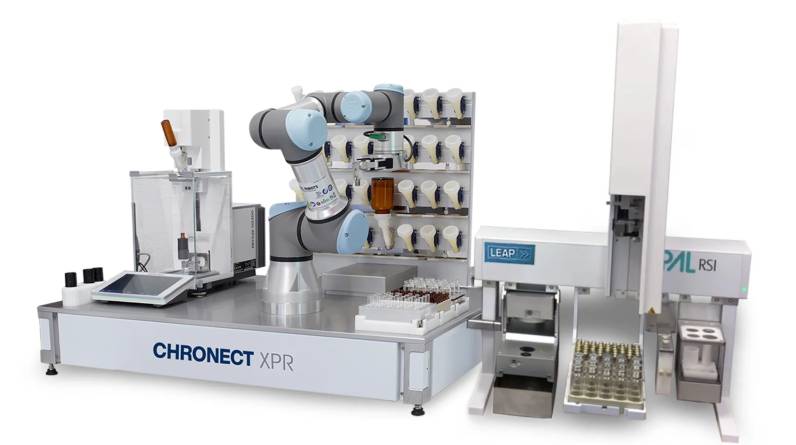Achieving Precision and Accuracy with Powder Dosers in Lab Research

When carrying out laboratory research, having the right tools and equipment is essential for achieving precise and accurate results. One often overlooked piece of equipment that plays a critical role is the powder doser. For researchers working with powdered chemicals, powders dosers allow highly accurate dispensing and efficient use of materials.
How Powder Dosers Work
Powder dosers are designed to precisely measure and dispense powdered chemicals, ingredients, or samples. Most powder dosers function using a screw feed mechanism. The desired amount of powder is entered into the doser’s control panel. As the screw rotates, it carries the powder to the dispensing outlet. Sensors monitor the dispensing process to ensure the correct amount is dispensed.
Advanced powder dosers include features like:
- Mass flow sensors to monitor powder flow rate
- Vibratory trays to optimize powder flow
- Anti-jamming mechanisms to prevent clogging
- Precision stepper motors for dispensing control
- Modular designs to switch between powder canisters
Key Benefits of Using Powder Dosers
Investing in reliable powder dosers offers numerous benefits for labs:
Consistent dispensing – Powder dosers eliminate variability and human error during dispensing. Once properly calibrated, they will dispense the same precise amount every time. This boosts the reproducibility of experiments.
Material savings – Dosers allow highly accurate dispensing down to milligrams, reducing material waste. This enables more economical use of expensive reagents and ingredients.
Faster dispensing – Automated powder dosers are quicker than manual dispensing using scoops or spatulas. This saves significant time when dispensing large numbers of samples.
Reduced contamination – The enclosed design of dosers prevents powder contamination during dispensing. This helps maintain sample purity and integrity.
Flexibility – Sophisticated dosers can handle a wide range of powders with different characteristics. Some even allow dispensing into various containers and vessels.
Optimizing Powder Doser Use in the Lab
To reap the full advantages, labs should follow best practices around powder doser use:
- Select dosers able to handle the particle size, flow properties, and capacity needs of the powders being dispensed. Match the doser technology to the application.
- Locate dosers in low-vibration environments to prevent powder settling and provide stable dispensing.
- Develop standard operating procedures for checking calibrations and monitoring dispensed weights.
- Train personnel on proper doser cleaning and maintenance to prevent malfunctions.
- Implement quality control testing procedures to verify dispensing accuracy at routine intervals.
Achieving Greater Accuracy with Automated Dispensing
As research projects tackle more complex scientific questions, the need for highly precise and accurate dispensing has grown. Automated powder dosers now allow dispensing with accuracy down to 10 mg or less. This enables scientists to work with smaller sample sizes and minimize costly reagent consumption.
Advanced dosers also provide real-time monitoring and feedback on dispensing results. Sensors track flow rates and weigh dispensed amounts to alert users of any inaccuracies or inconsistencies. This data helps ensure each dispense meets the target weight within a narrow margin of error. With this level of monitoring, automated dosers exceed manual precision on even minute powder quantities.
Complying with Regulatory Standards
In regulated laboratories working under GLP, GMP, or ISO quality standards, documentation and traceability are strict requirements. This is where automated powder dosers provide advantages over manual dispensing approaches. Sophisticated dosers can output dispensing reports showing weights for each dispense. This provides documentation needed for inspections and audits. Dosers also integrate with laboratory information management systems (LIMS) for sample tracking from dispensing through analysis. By improving compliance, automated dosers enable laboratories to meet higher regulatory and quality demands.
The Future of Automated Powder Handling
As research needs evolve, powder dosers continue advancing to provide greater precision, speed, and versatility:
- Integration of dosers with robotics for automated sample preparation workflows
- Use of artificial intelligence to optimize doser settings and dispensing parameters
- Modular doser configurations allowing multiple powder canisters and dispensing modes
- Miniature dosers for dispensing into increasingly small containers like nanovials
By enabling highly accurate and flexible powder dispensing, advanced powder dosers will play an expanding role in pushing the boundaries of laboratory research. Investing in this technology can pay dividends for both research quality and productivity.
Learn more about it: Gold Price fintechzoom
Leave a reply
You must be logged in to post a comment.







